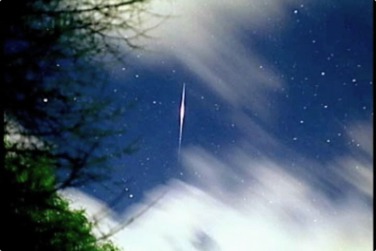The International Space Station is not the brightest human-made targets for satellite-spotters. Not even close! A tiny communications satellite, only four meters (13 feet) long, can be a hundred times brighter—as bright as a crescent moon—visible even in broad daylight. This is an Iridium satellite, and there are several dozen of them in orbit.
Iridium satellites are only that bright for a very short time: five to 20 seconds. These events are called Iridium flares, and you have to know in advance exactly when and where in the sky they'll show up to catch one.
Flares happen when sunlight strikes one of a satellite's three main mission antennae at exactly the right angle to reflect down to a relatively small area on the ground.
The antennae of Iridium satellites are highly reflective aluminum plates that act like giant mirrors. You might even have seen one of these events before and wondered what it could possibly have been.
